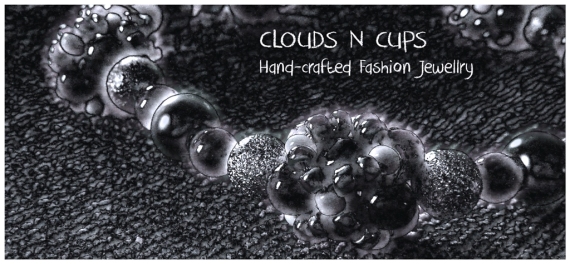There is no blue without yellow and without orange. ~ Vincent Van Gogh
Blue is the colour of light between violet and green on the visible spectrum.
The modern English word blue comes from Middle English bleu or blewe. In Russian and some other languages, there is no single word for blue, but rather different words for light blue and dark blue.
Surveys in the U.S. and Europe show that blue is the colour most commonly associated with harmony, faithfulness, and confidence.
However it is also sometimes associated with sadness.
The earliest known blue dyes were made from plants – woad in Europe, indigo in Asia and Africa.
In the art and life of Europe during the early Middle Ages, blue played a minor role. The nobility wore red or purple, while only the poor wore blue clothing, coloured with poor-quality dyes made from the woad plant.
King Louis IX of France, better known as Saint Louis (1214–1270), became the first King of France to regularly dress in blue. This was copied by other nobles.
Once blue became the colour of the King, it also became the colour of the wealthy and powerful in Europe. However, blue was replaced by black as the power colour in the 14th century, when European princes, and then merchants and bankers, wanted to show their seriousness, dignity and devoutness.
Blue pigments were made from minerals, usually either Lapis Lazuli (a semi-precious stone mined in Afghanistan for more than three thousand years) or Azurite (a soft, deep blue copper mineral produced by weathering of copper ore deposits.) Today most blue pigments and dyes are made by a chemical process.
In about the 9th century, Chinese artisans abandoned the Han blue colour they had used for centuries, and began to use cobalt blue, made with cobalt salts of alumina, to manufacture fine blue and white porcelain.
European courts tried for many years to imitate Chinese blue and white porcelain, but only succeeded in the 18th century after a missionary brought the secret back from China.
In Egypt, blue was associated with the sky and with divinity. The Egyptian god Amun could make his skin blue so that he could fly, invisible, across the sky.
Blue could also protect against evil; many people around the Mediterranean still wear a blue amulet, representing the eye of God, to protect them from misfortune.
In the Islamic world, blue was of secondary importance to green, believed to be the favourite colour of the Prophet Mohammed.
Something old
Something new
Something borrowed
Something blue
And a silver sixpence in her shoe
 Something Blue is a phrase deriving from a saying about the items a bride should carry or wear on her wedding day for good luck. The rhyme can earlier be found in an 1876 edition of Notes and Queries, and is called an “ancient custom” in another 1876 book, Bye-gones, relating to Wales and the Border Counties.
Something Blue is a phrase deriving from a saying about the items a bride should carry or wear on her wedding day for good luck. The rhyme can earlier be found in an 1876 edition of Notes and Queries, and is called an “ancient custom” in another 1876 book, Bye-gones, relating to Wales and the Border Counties.
Read More @
http://en.wikipedia.org/wiki/Blue
http://en.wikipedia.org/wiki/Something_old

Blue is my favourite colour and this piece of jewelry is also one of my favourite ones.
Therefore, here I am with this post, extracting some interesting facts about ‘Blue’ from Wikipedia to share with you lovely souls out there.
Last but not least, here’s another old song that I used to listen when I was young (but no…I am still not that old yet..LOL)
What is your favourite colour?
Do drop us a comment if you lovely souls out there would like to share with us your favourite colours.
Have a wonderful day ahead, always!
Till then,
Cheers & TTFN ~ 😀













26 responses to “Love Is Blue”
The Presents of Presence
January 11th, 2014 at 21:58
Blue is my favorite color as well! I love that you taught us so much in this post! Awesome! ♥
LikeLike
BeWithUs
January 11th, 2014 at 22:00
Aww…thank you so much for reading this post and feeling happy to know that we have the same favourite colour, my friend!
Your lovely comment always cheers me up, thank you oce again~ Cheers!! 😀
LikeLike
Fashion Mayann
January 11th, 2014 at 22:14
I’ve learned many interesting facts about my ex-favorite color LOL ! Now, my favorite color is purple, but it’s still really close to blue, right ? Great post ! Cheers !!
LikeLike
BeWithUs
January 12th, 2014 at 10:57
(⇀‸↼‶)..*sob*..ex-colour???
Well, purple is a nice colour too..hehe…
Thank you so much for reading this post, my purplish friend!
Have a wonderful day ahead, always~ Cheers!! 😀
LikeLike
YellowCable
January 12th, 2014 at 01:14
Since my cloth that I am wearing now is blue. I would say blue for now 🙂
LikeLike
BeWithUs
January 13th, 2014 at 16:25
Thank you so much for reading this post, my friend.
So, what colour are you wearing now while reading this reply? Will it still be blue?? Hehe…
Happy Monday and Cheers!! 😀
LikeLike
YellowCable
January 13th, 2014 at 19:32
Ha, you got me 🙂 I am wearing a blue sweater..
Please have a Happy Monday too.
LikeLike
BeWithUs
January 15th, 2014 at 14:25
ヽ(´▽`)/ YAY ヽ(´▽`)/
LikeLike
queenofhearts58
January 13th, 2014 at 00:50
Thanks for the history lesson on the color blue. I love history so this was quite interesting to me. I hope you are having a wonderful day! Much love and light to you my friend and have a blessed day!
LikeLike
BeWithUs
January 13th, 2014 at 16:53
Thank you so much for reading this post, my friend!
I am glad you’ve enjoy reading this post and I might be able to do a few more similar ones since some lovely souls have shared with me their favourite colours.
Btw, what’s your favourite colour? Is it red?? (just some wild guessing…hehe)
Cheers!! 😀
LikeLike
queenofhearts58
January 17th, 2014 at 03:01
I guess that was just an off the wall guess..lol..but absolutely, my favorite color is red. I really don’t have enough of it on my page huh? I do like contrast a lot red and black are dramatic and they off set each other so nicely. Another favorite color combination of mine is a deep purple and steel gray. Sharp looking.
LikeLike
BeWithUs
January 18th, 2014 at 16:25
Yes…black and red (especially crimson..i.e. to my opinion..hehe) definitely go well together and yes, yes, yes…deep purple and steel gray is another marvelous combination…love them too!
Thank you so much for sharing your favourite colours with us, my dear friend!
Cheers!! 😀
LikeLike
Nadyess
January 13th, 2014 at 03:23
Wow!! I love this post!! And it’s very informative ‘ cause I even got to know more about my favorite colour. 🙂 I love Cyan the most, maybe because I was born on an Island and because of all the different blue colors from the sea I always used to like that part the most. Thank you very much for sharing and I wish you a wonderful week ahead!
LikeLike
BeWithUs
January 15th, 2014 at 11:57
Thank you so much for reading this post, my friend!
Hope everything is fine at your side and thank you so much for sharing your favourite colours with us!
Have a wonderful day ahead, always~ Cheers!! 😀
LikeLike
Nadyess
January 18th, 2014 at 01:56
No need to thank me Dear! I love reading your beautiful posts. 🙂 I have been reading a lot in the past weeks and have a lot to catch with the blogging but I’m getting back on track so I hope to show my ‘face’ a little more than I’m doing now. I wish you a beautiful and blessed weekend!!
LikeLike
BeWithUs
January 18th, 2014 at 20:04
Can’t wait to read more posts from your lovely blog soon, my friend!
Once again, thank you so much for your love and readership support!!
Have a wonderful weekend ahead, always~ Cheers!! 😀
LikeLike
SirenaTales
January 13th, 2014 at 06:55
So interesting, and lovely (or should I say bluetiful?) jewelry.Thank you. xo
LikeLike
BeWithUs
January 15th, 2014 at 14:03
Thank you so much for reading this post, my bluetiful friend!!
Cheers!! 😀
LikeLike
Ron
February 17th, 2014 at 22:02
I haven’t head a reference to Love Is Blue for many years. It’s a love song that still lives on, but I don’t hear it much on the radio anymore.
LikeLike
BeWithUs
February 19th, 2014 at 16:43
Thank you so much for reading this post, my friend.
Yes, indeed…I’ve came to know this song when I was a little girl listening to my father’s music and like many other lovely oldies, it has been etched to my mind despite the fact that I’ve not heard this song for so many many many years…hehe…
Have a wonderful and blues-free day ahead, always~ Cheers!! 😀
LikeLike
Ron
February 19th, 2014 at 22:44
Writing humor and poetry lot,(as well as thinking about it) is an anti-blues prescription for me.
I’m too busy for the blues. Hey, that can be a song title. LOL Take care.
LikeLike
BeWithUs
February 22nd, 2014 at 22:52
Great to know that, my friend!
Always good to keep our mind busy with all the positiveness and humour in life!!
Have a wonderful weekend ahead, always~ Cheers!!
LikeLike
Ron
February 22nd, 2014 at 23:15
You too. Thanks.
LikeLike
BeWithUs
February 24th, 2014 at 13:41
Happy Monday, my friend!
Cheers!! 😀
LikeLike
Glynis German
February 22nd, 2014 at 01:53
I love this piece of jewellry and although red is the colour of lipstick I prefer and the colour for when I am feeling sassy, blue is now going to be tried! Thanks for the interesting information too!
LikeLike
BeWithUs
February 23rd, 2014 at 02:01
Thank you so much for reading this post and sharing your love for the “Blue Gem Filigree” necklace with us in this sweet comment.
Do have fun with trying out this new colour for your lipstick and enjoy this lovely weekend coming ahead.
Cheers!! 😀
LikeLike